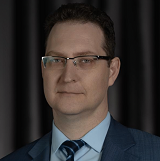Cytokine status disorders in children with urticaria
https://doi.org/10.21886/2219-8075-2020-11-4-51-57
Abstract
Objective: to study the state of cytokine status in children with acute and chronic urticaria.
Materials and methods: 264 children of both sexes aged from 6 to 16 years with different variants of urticaria were examined. Clinical research methods included analysis of anamnestic data, objective examination of the child to determine the severity of urticaria. Immunological research methods included determination of IL-4, IL-6, IL-17, and IFN-γ levels by the method of enzyme immunoassay of blood serum.
Results: cytokine profile analysis revealed hyperproduction of IL-17, γ-IFN with reduced IL-4 synthesis in children with acute urticaria. In children with chronic urticaria, IL-6 hyperproduction is noted against the background of a significant decrease in IL-4 synthesis.
Conclusion: there was a significant relationship between the development of severe acute urticaria and the levels of proinflammatory cytokines IL-6, IL-17, and between the formation of chronic urticaria and the level of IL-6.
About the Authors
S. V. MaltsevRussian Federation
Cand. Sci. (Med.), Associate Professor, head of pediatric Department of clinic,
Rostov-on-Don
L. P. Sizyakina
Russian Federation
Dr. Sci. (Med.), Professor, head of the Department of clinical immunology and Allergology,
Rostov-on-Don
A. A. Lebedenko
Russian Federation
Dr. Sci. (Med.), Professor, head of the Department of children’s diseases №2,
Rostov-on-Don
A. N. Pampura
Russian Federation
Dr. Sci. (Med.), head of the Department of Allergology and clinical immunology,
Moscow
References
1. Goryachkina L.A., Nenasheva N.M., Borzova E.YU. Urticaria. Attending physician. 2003;(9):43-45. (In Russ).
2. Federal clinical guidelines for the care of children with urticaria. Union of pediatricians of Russia. 2015:32. (In Russ)
3. Borzova E.YU. Biomarkers of local and systemic inflammation in chronic urticaria: Dissertation of doctor of medical Sciences. – Moscow; 2012. (In Russ).
4. Solovej T.N. Pathogenetic characteristics of clinical forms of chronic urticaria, substantiation of differentiated tactics of diagnosis and treatment in children: Dissertation of candidate of medical Sciences. Moscow; 2008. (In Russ).
5. Yalovega G.E., Lebedenko A.A., Mal’tsev S.V., Kalmykova T.S., Averkina L.A., et al. Features of the microelement status in children with acute urticaria. Pediatric pharmacology. 2016;13(2):101-104. DOI: 10.15690/pf.v13i2.1550
6. Malcev S.V., Sizyakina L.P., Lebedenko A.A., Malakhova M.E. Features of adaptive and innate immunity in children with different variants of acute urticarial. Cytokines and inflammation. 2014;14(3):117-118. (In Russ). eLIBRARY ID: 22840551
7. Obrazcov A.A. Urticaria in children: pathogenesis, clinic, diagnosis and treatment: Dissertation of candidate of medical Sciences. Moscow, 2006. (In Russ).
8. Sizyakina L.P., Andreeva I.I. Handbook of clinical immunology. Rostov-on-Don; 2005. (In Russ).
9. Sizyakina L.P., Lebedenko A.A., Malcev S.V., Posevina A.N., Averkina L.A. Murticaria in children: a modern view on the problem. Medical Herald of the South of Russia. 2015;(4):5-13. (In Russ.) DOI: 10.21886/2219-8075-2015-4-5-13
10. Lin YR, Liu TH, Wu TK, Chang YJ, Chou CC, Wu HP. Predictive factors of the duration of a first-attack acute urticaria in children. Am J Emerg Med. 2011;29(8):883-9. doi: 10.1016/j. ajem.2010.04.004
11. Mathur AN, Mathes EF. Urticaria mimickers in children. Dermatol Ther. 2013;26(6):467-75. doi: 10.1111/dth.12103
12. Zuberbier T, Asero R, Bindslev-Jensen C, Walter Canonica G, Church MK, et al. EAACI/GA(2)LEN/EDF/WAO guideline: definition, classification and diagnosis of urticaria. Allergy. 2009;64(10):1417-26. doi: 10.1111/j.1398-9995.2009.02179.x.
Review
For citations:
Maltsev S.V., Sizyakina L.P., Lebedenko A.A., Pampura A.N. Cytokine status disorders in children with urticaria. Medical Herald of the South of Russia. 2020;11(4):51-57. (In Russ.) https://doi.org/10.21886/2219-8075-2020-11-4-51-57






































